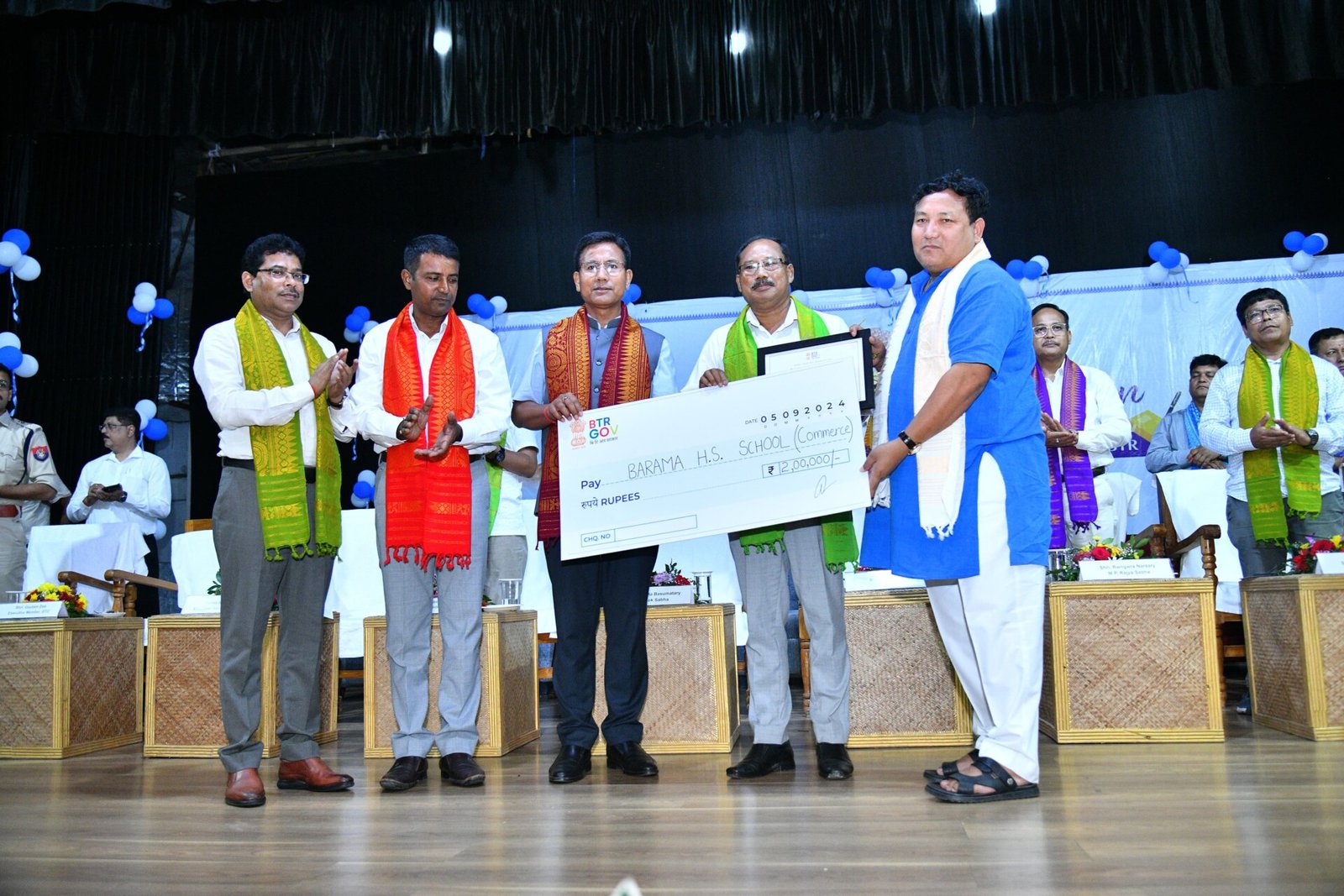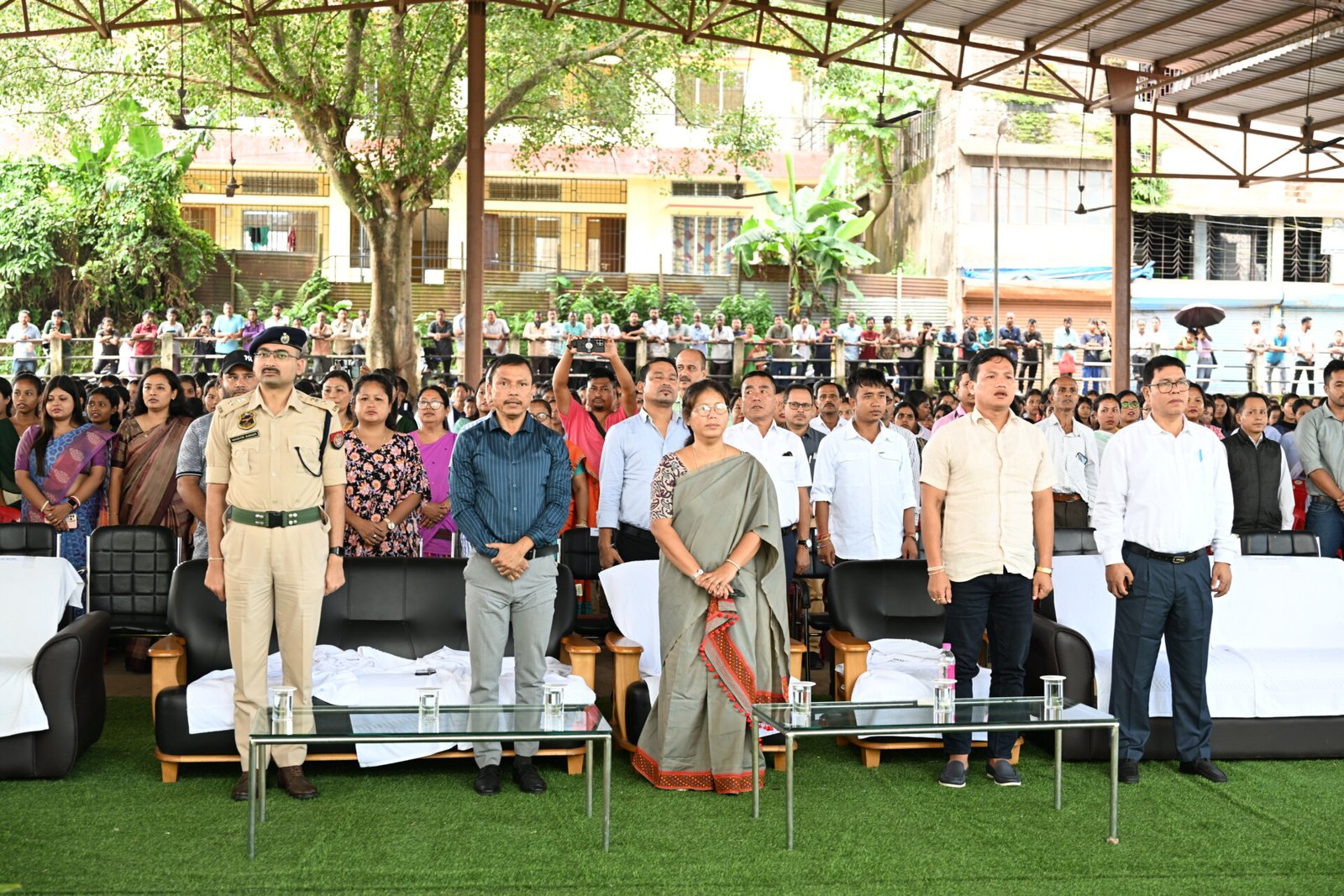HT Correspondent
HAFLONG, June 14: In a landmark moment for indigenous language education, the foundational stage textbooks in the Dimasa language were ceremonially launched today at the Cultural Institute Hall, Haflong, aligning with the vision of the National Education Policy (NEP) 2020.
The event was graced by the Chief Executive Member (CEM) of the North Cachar Hills Autonomous Council, Debolal Gorlosa, as the chief guest, accompanied by a team of legislators and dignitaries. In a symbolic gesture, headmasters from five Lower Primary Schools received the newly introduced textbooks, marking the formal commencement of Dimasa as a medium of instruction at the foundational level.
This development follows the Government of Assam’s recent decision to designate 278 Lower Primary Schools in Dima Hasao district as Dimasa Medium Schools. Beginning from the 2025–26 academic session, students in these institutions will be taught using the Dimasa language, a move aimed at strengthening cultural roots and enhancing learning outcomes among young learners.
Speaking at the occasion, CEM Gorlosa emphasized that this initiative was long overdue and should have been implemented much earlier. He highlighted that one of the most significant features of NEP 2020 is its focus on promoting mother tongues and regional languages, especially during the early years of education. However, he cautioned that the successful realization of this vision requires collective support from stakeholders across all sectors—educationists, policymakers, community leaders, and civil society.
He expressed deep gratitude to the Dimasa Sahitya Sabha, its sub-committee, the Dimasa Language Committee, and other community-based organizations for their contributions in developing the textbooks and advocating for language preservation. Gorlosa also issued a heartfelt appeal to work collectively toward the inclusion of the Dimasa language in the Eighth Schedule of the Constitution, underlining that language is central to cultural identity, and losing a language is akin to losing a part of one’s heritage.
Donpainon Thaosen, Executive Member in charge of Education, also addressed the gathering and expressed appreciation for being part of this momentous occasion. He clarified that the original proposal had included 282 schools, but only 278 were approved due to four schools lacking a valid UDISE (Unified District Information System for Education) code, a technical prerequisite for formal recognition.
The Dimasa language, also known as Grao-Dima, belongs to the Tibeto-Burman language family and is primarily spoken by the Dimasa community in Assam and parts of Nagaland. It is regarded as one of the oldest and culturally rich languages of Northeast India, with deep historical ties to the region’s legacy.
The event was attended by a host of dignitaries, including Chairman Mohet Hojai, Executive Members and Members of the Autonomous Council, Joint Secretary & in-charge of Education Rebecca Changsan, former ACS officer and President of Dimasa Sahitya Sabha Ramesh Thaosen, District Primary Education Officer Medhabi Thaosen, Purabi Phonglo, DIPRO, and representatives from various civil societies, teachers’ associations, and local community organizations.
The event concluded with a renewed sense of pride and commitment among attendees, who pledged to further the cause of mother-tongue education and to preserve and promote the Dimasa language for future generations.












